Endocannabinoids, Cannabimimetics, and Phytocannabinoids
There are three categories of cannabinoids, the naturally occurring chemical compounds that work with our endocannabinoid system. The first is the endocannabinoids themselves, these are cannabinoid molecules that our animal bodies make to keep us healthy and balanced. The second category consists of cannabimimetics (mimetic means imitated or mimicked). These are the result of the pharmaceutical industry synthesizing a copycat molecule for legal prescription use. There are several of these cannabimimetics on the market (pharmaceuticals Nabilone and Rimonabant are two examples), which are considered effective, but have shown fewer therapeutic effects than herbal cannabis. The final category is the phytocannabinoids, or the cannabinoid molecules that come directly from the cannabis plant itself, and the namesake of the whole system.
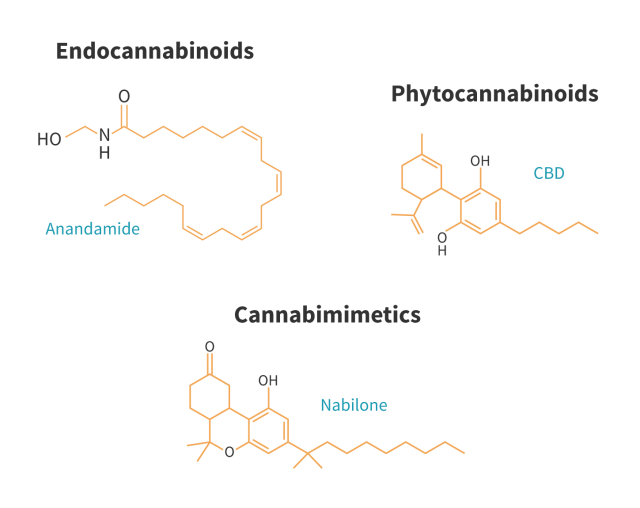
Phytocannabinoids
Phytocannabinoids are “any plant-derived natural product capable of either directly interacting with cannabinoid receptors or sharing chemical similarity with cannabinoids, or both.” These are the molecules most people think of (like CBD and THC) when they hear the word cannabinoid. Phytocannabinoids were first discovered in Israel in the 1960s, and in the late 80s they led to the discovery of the endocannabinoid system, now thought to be the largest receptor system in the body, and perhaps the most important regulator of health and homeostasis in humans and other vertebrates.
Evolved for Defense
Keep in mind that the cannabis plant itself does not have cannabinoid receptors. Phytocannabinoids are made by many types of plants, including hops, echinacea, and chocolate, but are ubiquitous in the Cannabaceae family. Without those receptors, however, these plants don’t utilize the cannabinoids as a signaling system, like our bodies do. Instead, plants produce phytocannabinoids and terpenes, the highest concentrations of which are secreted from the flowers in sticky, resinous trichomes. It is thought that these phytocannabinoids may have evolved to help protect the plants from UV radiation, while THC-A and CBG-A are insecticidal, and the sticky trichomes contribute an added layer of protection. It may go against common sense, but cannabinoids have herbicidal properties as well. They are responsible for pruning the maturing plant, so that it can put more energy into reproduction.
The cannabinoid count sits somewhere between 85 and 110, each a unique molecule with its own chemical structure, and those numbers are sure to increase with more research. These cannabinoids work with each other and our bodies in a complex web that employs the human endocannabinoid system to provide relief from pain, nausea, anxiety, inflammation, and a growing list of other ailments. Here are some things we know about the most common cannabinoids found in cannabis.
THCA – Tetrahydrocannabinolic Acid
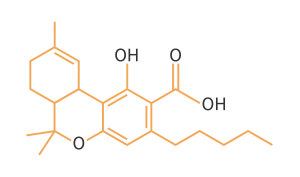
Along with CBDA (The A stands for acid in both), THCA is one of the most prevalent cannabinoids present, at least until the molecules are decarboxylated (the process is called that because it causes the molecules to lose their carboxylic acid) through heat, light, or time. Once they’ve lost their carboxylic acid, CBDA and THCA and become CBD and THC, respectively. Unlike THC, THCA is non-psychoactive. It shows promise in reducing nausea, seizures, muscle spasms, and fighting tumor cells, and has been shown to have anti-inflammatory and neuroprotective properties.
THC – Tetrahydrocannabinol
Once THCA has been decarboxylated, the remaining molecule is THC. There are two varieties, the most common called Delta-9 THC. This is the main psychoactive component in cannabis, and it acts on both the CB1 and CB2 receptors. THC has also been shown to reduce pain perception, nausea, and vomiting, aid sleep, and help suppress muscle spasms. Research suggests it may also be neuroprotective and inhibit cancer cell growth. Delta-8 THC has a very similar structure, but is present at a much lower concentration. It is also considered psychoactive, and binds to the CB1 receptors, primarily in the central nervous system. It is considered to have antiemetic (meaning reducing nausea and vomiting), appetite-stimulating, neuroprotective, and particularly analgesic (pain relief) properties.
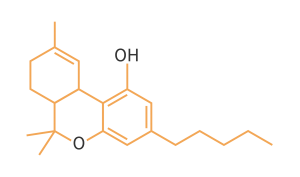
CBDA – Cannabidiolic Acid

The acidic precursor to CBD, CBDA is found in the raw plant, before it has been exposed to heat, sunlight, or time. CBDA has been demonstrated to reduce nausea and inflammation, and there is evidence it may inhibit some cancer tumor growth.
CBD – Cannabidiol
Once CBDA has been decarboxylated, the molecules are transformed into CBD. CBD is the most well-known of the cannabinoids, and works with our endocannabinoid system by reacting with CB2, the same receptors that respond to our endocannabinoid anandamide. Research on CBD has shown it promotes bone growth, reduces blood sugar levels, reduces nausea, vomiting, anxiety, seizures and convulsions, is anti-inflammatory, anti-tumoral, and analgesic, and there is promising research on more fronts every day.

CBN – Cannabinol
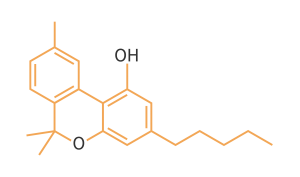
As THC is broken down, which happens when already harvested cannabis ages, it is converted in CBN. It has a high affinity for CB2 receptors over CB1, implying that it effects the immune system more than the brain. CBN is known to help with insomnia, pain relief, promotion of bone growth, muscle spasms, and to be an appetite stimulant.
CBGA – Cannabigerolic Acid
CBGA is found mostly in young plants, as it develops into THCA and CBDA as the plants mature. There is often very little left once the plants are harvested, and when it is exposed to light and air, the remaining CBGA converts to CBG. CBGA is considered to reduce inflammation and pain, and it has been shown to show bacterial growth.

CBG – Cannabigerol
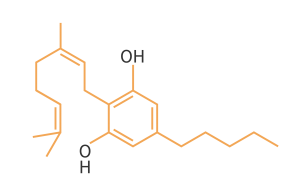
Once a plant is harvested, any CBGA that has not already developed into THCA or CBDA becomes CBG. CBG is not psychoactive, and has been shown to slow bacterial growth, promote bone growth, and has been used as a sleep aid, mood stabilizer, muscle relaxant, and blood pressure reducer. It has also been found to be antibiotic, antimicrobial, and anti-fungal.
CBCA – Cannabichromenic Acid
Often used to treat fungal infections and reduce inflammation, CBCA is the precursor to CBC, and is found mostly in immature cannabis plants.
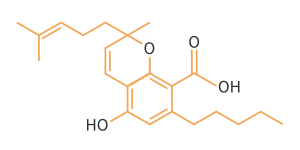
THCV – Tetrahydrocannabivarin

THCV is a psychoactive cannabinoid, and has been shown to suppress appetite, reduce panic attacks, seizures, and convulsions, regulate blood sugar levels, stimulate bone growth, and help with Alzheimer’s. THCV is only about a fifth as psychoactive as THC, and can even mitigate some problems associated with it.
CBC – Cannabichromene
CBC is a non-psychoactive cannabinoid with clear evidence of health benefits. It has a long list of promising possible uses, including inhibiting tumor growth, pain relief, reducing inflammation, and promoting bone growth. It also has anti-epileptic, anti-bacterial, antifungal, and sedative properties. A 2010 study showed CBC to be most effective at anti-inflammation when taken alongside THC, another compelling argument for the Entourage Effect.
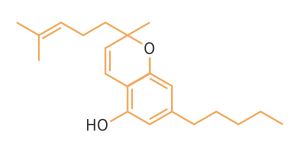
Entourage Effect
The components of the cannabis plant, namely the cannabinoids and the terpenes, interact with our bodies in synergistic ways, magnifying or diminishing each other’s effects in increasingly intricate reactions. This web of interactions is called the Entourage Effect, and our knowledge of it has only scratched the surface. The terpene myrcene can reduce the blood-brain barrier, enabling cannabinoids to pass through more easily; terpenes linalool and limonene combine with CBD to combat acne; THC in concert with CBN has a sedating effect – the list of combinations is endless. Research has repeatedly found evidence of this synergy, though the underlying mechanisms are still far from clear.
The term “whole plant medicine” means to utilize the full spectrum of therapeutic compounds in cannabis, including all the cannabinoids and terpenes. Full-spectrum oils and distillates are a good source of whole plant medicine, as opposed to a cannabinoid isolate or synthetic pharmaceutical, both of which are better options if you are looking for an isolated cannabinoid type.
The Future
Research in cannabinoids has proven promising, and in 2019 the federal government plans to award $1.5 million dollars in grants to researchers studying how components of cannabis other than THC effect pain. The grant’s aims are targeted specifically at cannabinoids and terpenes, with an emphasis on the entourage effect, and their stated goals are “to investigate the potential analgesic properties and adverse effects of minor cannabinoids, alone or in combination with each other or terpenes,” and “to characterize if/how specific terpenes may influence potential analgesic properties of cannabinoids; alone or in combination with each other or terpenes.”
It’s an exciting time for cannabis research, and our understanding of cannabinoids and their interactions is sure to only improve as more resources become available.
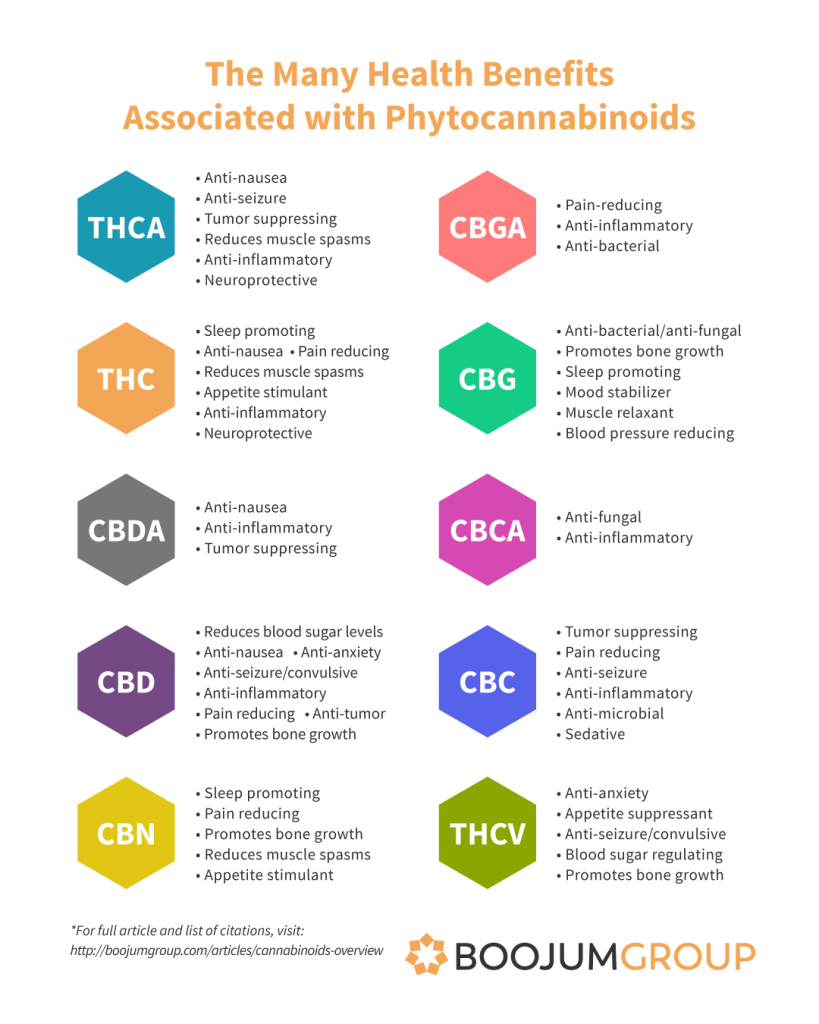
REFERENCES
https://www.cb1cap.com/blog/2019/2/19/the-major-role-of-minor-cannabinoids
https://www.fundacion-canna.es/en/biological-effects-lesser-known-phytocannabinoids
https://www.green-flower.com/articles/128/beginners-guide-to-cannabinoids
https://www.leafly.com/news/cannabis-101/list-major-cannabinoids-cannabis-effects
Andre, C. M., Hausman, J. F., & Guerriero, G. (2016). Cannabis sativa: the plant of the thousand and one molecules. Frontiers in plant science, 7, 19.
Di Marzo, V. (2016). Phytocannabinoids: a growing family of plant natural products with increasing pharmacological and clinical importance. Planta Medica, 82(S 01), PL2a.
Fisar, Z. (2009). Phytocannabinoids and endocannabinoids. Current drug abuse reviews, 2(1), 51-75.
Gertsch, J., Pertwee, R. G., & Di Marzo, V. (2010). Phytocannabinoids beyond the Cannabis plant–do they exist?. British journal of pharmacology, 160(3), 523-529.
Hanuš, L. O., Meyer, S. M., Muñoz, E., Taglialatela-Scafati, O., & Appendino, G. (2016). Phytocannabinoids: a unified critical inventory. Natural product reports, 33(12), 1357-1392.
Morales, P., Hurst, D. P., & Reggio, P. H. (2017). Molecular targets of the phytocannabinoids: a complex picture. In Phytocannabinoids (pp. 103-131). Springer, Cham.
O’brien, L. D., Wills, K. L., Segsworth, B., Dashney, B., Rock, E. M., Limebeer, C. L., & Parker, L. A. (2013). Effect of chronic exposure to rimonabant and phytocannabinoids on anxiety-like behavior and saccharin palatability. Pharmacology Biochemistry and Behavior, 103(3), 597-602.
Russo, E. B. (2011). Taming THC: potential cannabis synergy and phytocannabinoid‐terpenoid entourage effects. British journal of pharmacology, 163(7), 1344-1364.
Next Article: The Spectral Landscape of Cannabis
